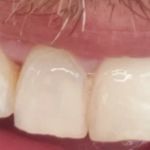1. What is Tooth Decay?
Tooth decay, also known as dental caries or cavities, is a breakdown of the tooth structure caused by acids produced by bacteria. These acids can erode the enamel and create holes in the teeth, leading to pain, infections, and even tooth loss if not treated promptly. Tooth decay is one of the most common dental problems worldwide and affects people of all ages. However, understanding the causes and preventive measures can help you avoid the discomfort and complications associated with this condition.
2. Causes of Tooth Decay
Tooth decay is caused primarily by poor oral hygiene that allows plaque to build up on the teeth. Plaque is a sticky film of bacteria that forms on your teeth after eating sugary foods or drinks. These bacteria use sugar as food and produce acids that erode the enamel, leading to cavities. Other factors contributing to tooth decay include genetics, a dry mouth, and frequent snacking. Poor dietary habits, such as excessive sugar consumption, also play a significant role in increasing the risk of tooth decay.
3. Symptoms of Tooth Decay
Tooth decay doesn’t always cause symptoms at first, which is why regular dental check-ups are essential. However, as decay progresses, you may experience visible holes or pits in your teeth, sensitivity to hot or cold foods and beverages, toothache, or bad breath. If you notice any of these symptoms, it’s important to visit a dentist immediately to prevent further damage. Early intervention can often reverse the damage before it progresses to a severe stage.
4. How to Prevent Tooth Decay
Prevention is key when it comes to tooth decay. The best way to protect your teeth is to maintain a consistent oral care routine, including brushing your teeth at least twice a day with fluoride toothpaste and flossing regularly. Additionally, limiting sugary snacks and drinks can significantly reduce the risk of tooth decay. It’s also crucial to visit your dentist regularly for check-ups and cleanings, as they can identify early signs of decay and help you take action before it worsens. Fluoride treatments and dental sealants can also offer extra protection against cavities.
5. Real-Life Case: Overcoming Tooth Decay
Consider the case of John, a 32-year-old who struggled with recurring tooth decay despite brushing his teeth daily. After consulting with his dentist, he learned that his frequent consumption of sugary beverages and lack of flossing were the main contributors to his dental issues. John decided to make a change by reducing his sugar intake, incorporating flossing into his routine, and scheduling regular dental visits. Over time, his tooth decay was reversed, and he no longer experienced frequent cavities. John’s story serves as a reminder of how small changes can make a big difference in maintaining oral health.
6. Next Steps to Protect Your Teeth
If you want to protect your teeth from decay, the first step is to adopt a comprehensive oral hygiene routine. Regular brushing, flossing, and visiting your dentist for check-ups are crucial. If you’re looking for advanced solutions to keep your teeth healthy and prevent decay, consider exploring fluoride treatments and dental sealants. For more information on how to protect your oral health and prevent tooth decay, visit Dentistry Toothtruth today!







 Maui Whitening Orlando4.0 (32 review)
Maui Whitening Orlando4.0 (32 review) Bloomington Southside Dental Care3.0 (26 review)
Bloomington Southside Dental Care3.0 (26 review) Christiana Dental Center4.0 (650 review)
Christiana Dental Center4.0 (650 review) Carolina Dental Arts - New Bern Ave4.0 (152 review)
Carolina Dental Arts - New Bern Ave4.0 (152 review) Equitas Health Short North Medical Center3.0 (96 review)
Equitas Health Short North Medical Center3.0 (96 review) Prosthodontics of Madison - Kendra Schaefer, DMD & Christine Roenitz, DMD4.0 (25 review)
Prosthodontics of Madison - Kendra Schaefer, DMD & Christine Roenitz, DMD4.0 (25 review) The Importance of Oral Health Education During Pregnancy for a Healthy Pregnancy
The Importance of Oral Health Education During Pregnancy for a Healthy Pregnancy Best Tips for Brushing Your Teeth Properly for Healthy Gums: Essential Techniques for Oral Health
Best Tips for Brushing Your Teeth Properly for Healthy Gums: Essential Techniques for Oral Health Why Skipping Dental Checkups Can Lead to Bigger Oral Health Problems
Why Skipping Dental Checkups Can Lead to Bigger Oral Health Problems Advantages of Porcelain Dental Restorations
Advantages of Porcelain Dental Restorations How Can Diabetes Cause Tooth and Gum Problems? Preventing and Managing Oral Health Issues
How Can Diabetes Cause Tooth and Gum Problems? Preventing and Managing Oral Health Issues Healthy Habits for Promoting Good Oral Health and Hygiene: Tips for a Healthy Smile
Healthy Habits for Promoting Good Oral Health and Hygiene: Tips for a Healthy Smile